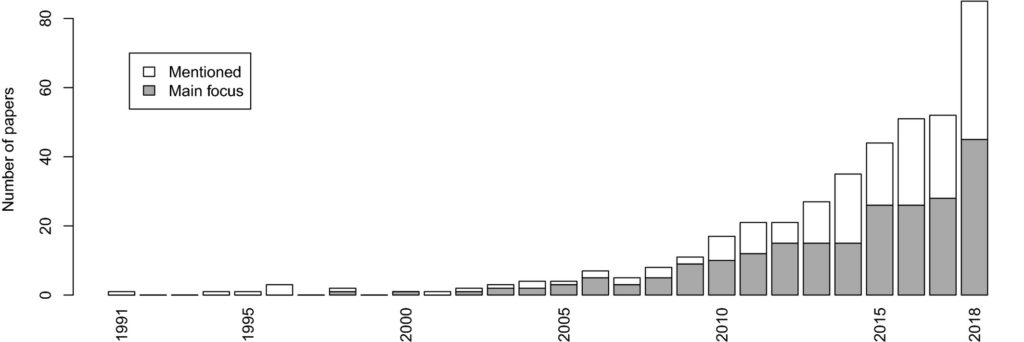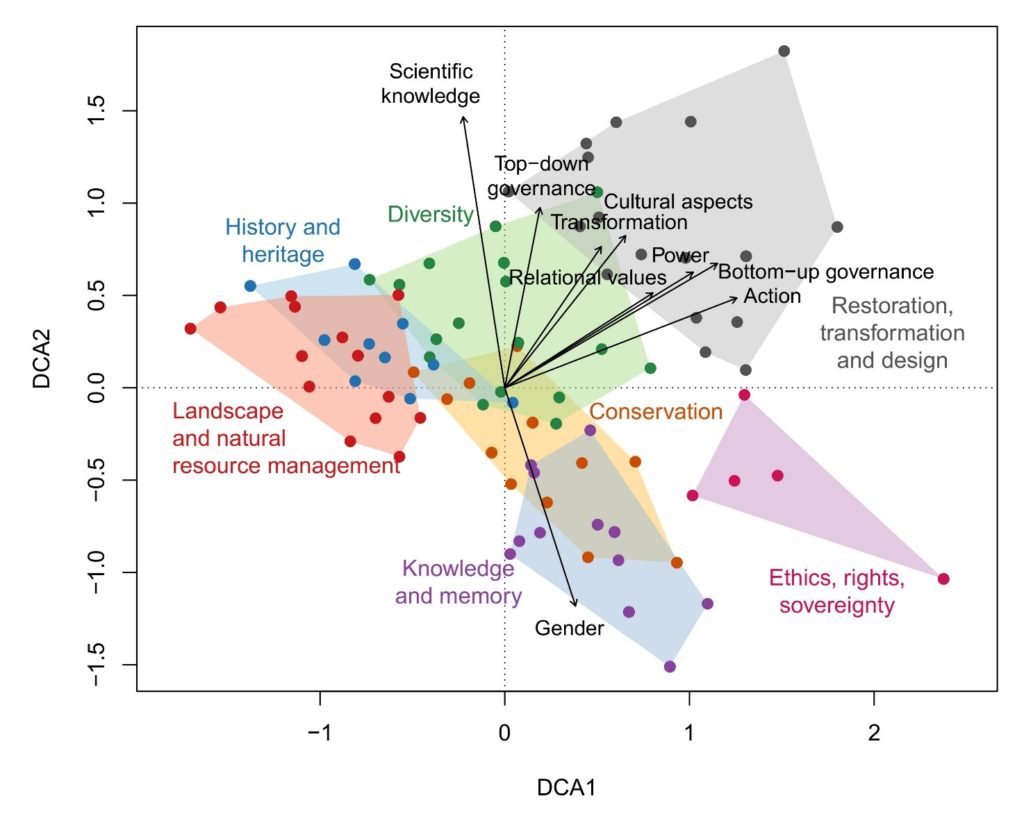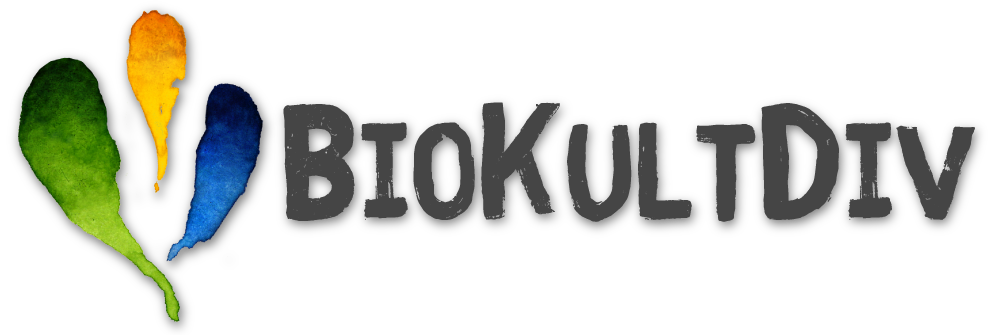by Marina Frietsch
Sustainability science is a discipline actively seeking solutions to current sustainability challenges. Core components include the adoption of a social-ecological systems perspective, the implementation of inter‐ and transdisciplinarity, and the commitment to solution-oriented work. For sustainability science to foster equality and amplify marginalized voices, the plurality of human–nature interactions and worldviews needs to be accounted for. To that end, a concept called biocultural approaches is increasingly perceived as a valuable tool. In their recent paper, Hanspach et al. (2020) present a systematic review of the application of biocultural approaches to sustainability in scientific journal articles published over the last 30 years. The authors identify seven distinct ways of understanding and applying biocultural approaches and analyze them with regard to their relation to the key aspects of sustainability science.
The concept of biocultural approaches to sustainability originates from the field of biological anthropology. Over the last decades, however, it has been spreading to other fields and its focus has turned towards the tight interlinkages between human societies and the natural and biophysical environment in which they exist. Recently, biocultural approaches are gaining attention in academia as ways of simultaneously representing, interpreting, and shaping human and cultural aspects of complex social–ecological systems. This ability to bridge diverse knowledge systems and combine social and biophysical dimensions could make biocultural approaches powerful tools in the pursuit for sustainability.

Biocultural approaches are typically referred to in a broad and vague way. With their study, Hanspach et al. (2020) aim at providing an overview of different, partially contrasting conceptions and applications of the concept in sustainability research to gain a thorough understanding of the diversity of perspectives on biocultural approaches available in the scientific literature. To that end, the authors analyzed 178 mostly empirical journal articles published between 1990 and 2018 using a mixed methods approach combining qualitative content analysis and quantitative multivariate methods.
Overall, the papers included in the review usually considered biological and cultural aspects simultaneously, mostly with a greater emphasis on the cultural dimension. A more in depth look at the findings shows that the understanding and application of biological approaches varies widely between articles: Hanspach et al. (2020) identified seven distinct biocultural lenses, which consider the key aspects of sustainability science to different degrees. For instance, 35 papers approach sustainability via a biocultural landscapes and natural resources management lens and thus emphasize a spatial view on human–environment interaction. In contrast, the lens represented in the largest amount of papers – the biocultural knowledge and memory lens – focuses on knowledge, practices, beliefs, and values as expressions of biocultural diversity and a long history of human–environment interaction. The lenses were not exclusive to each other and a considerable overlap across the different topics and perspectives was evident, indicating a strong potential of biocultural approaches to bridge topics.

After classifying the diverse conceptions of biocultural approaches to sustainability, Hanspach et al. (2020) explore on how they relate to key components of sustainability science. Regarding the social-ecological systems perspective, Hanspach et al. (2020) argue that by acknowledging the inseparable link between nature and culture, the concept has a deeply ingrained systems perspective at its core, thus making it an inherently social–ecological systems view. This is also reflected in the reviewed literature: most papers exhibited a systems perspective and considered biological and cultural dimensions in a balanced way. In addition, the articles covered a broad range of applications across different contexts, from biodiversity conservation and ecosystem restoration to discussions of ethical issues and their implementation in transformational research. An important finding however is that biocultural approaches still lack mainstreaming of issues related to gender, power, action and transformations.
The implementation of a systems perspective in practice requires the consideration of knowledge and methods from different disciplines, and from academic as well as from non-academic stakeholders. While interdisciplinarity approaches were frequently represented, Hanspach et al. (2020) found very little implementations of the principles of transdisciplinarity in the scientific publications analyzed. The authors argue that this lack of transdisciplinarity can undermine the full potential of biocultural approaches in research for sustainability. Nevertheless, the diverse biocultural lenses illustrate the flexibility of meanings and applications of biocultural approaches. This versatility can help facilitate communication and collaboration across different communities of practice and thus can be very useful in ongoing and future research in sustainability science
Finally, Hanspach et al. (2020) scrutinize the degree of solution-orientation exhibited in the reviewed literature. The findings indicate that biocultural lenses can be distinguished into two main types when it comes to engaging with sustainability solutions: while some lenses see conservation as a key strategy for future engagement, other lenses focus on transformation. Conservation focused lenses commonly apply biocultural approaches as a descriptive and analytical entry point to investigate social–ecological systems and and tend towards a narrower problem framing and a more descriptive analysis. By contrast, the transformation point of view tends to take the broader perspective requiring systemic change for solving problems, thus emphasizing more strongly the dynamic nature of biocultural relationships. In this regard, the latter type is more representative of what sustainability science stands for. Nevertheless, Hanspach et al. (2020) argue that depending on the specific context, the different emphases of the lenses can both be relevant as they provide different entry points.
While biocultural approaches to sustainability can improve their potential by strengthening transdisciplinarity, focusing on transformation rather than descriptive analyses, and steadily including questions of power and gender, the concept embraces many features that render it suitable for application in sustainability science. To learn more about the seven biocultural lenses and see which links Hanspach et al. (2020) found between the Sustainable Development Goals and biocultural approaches check out the full paper here. Or go to a summary on this website.

